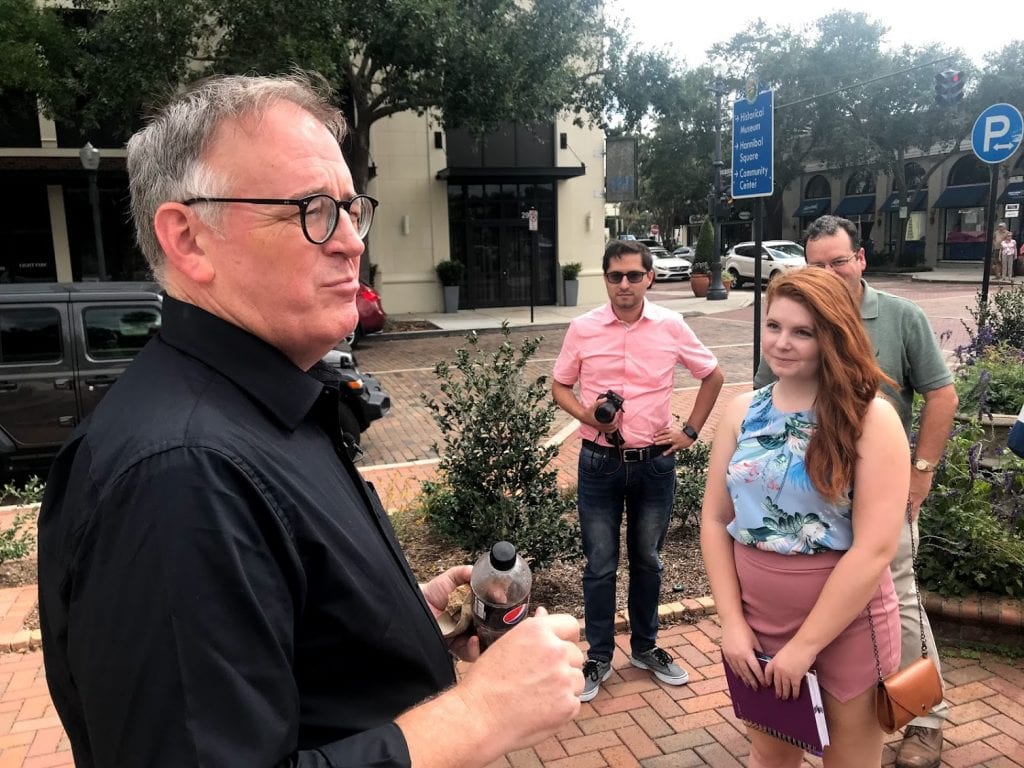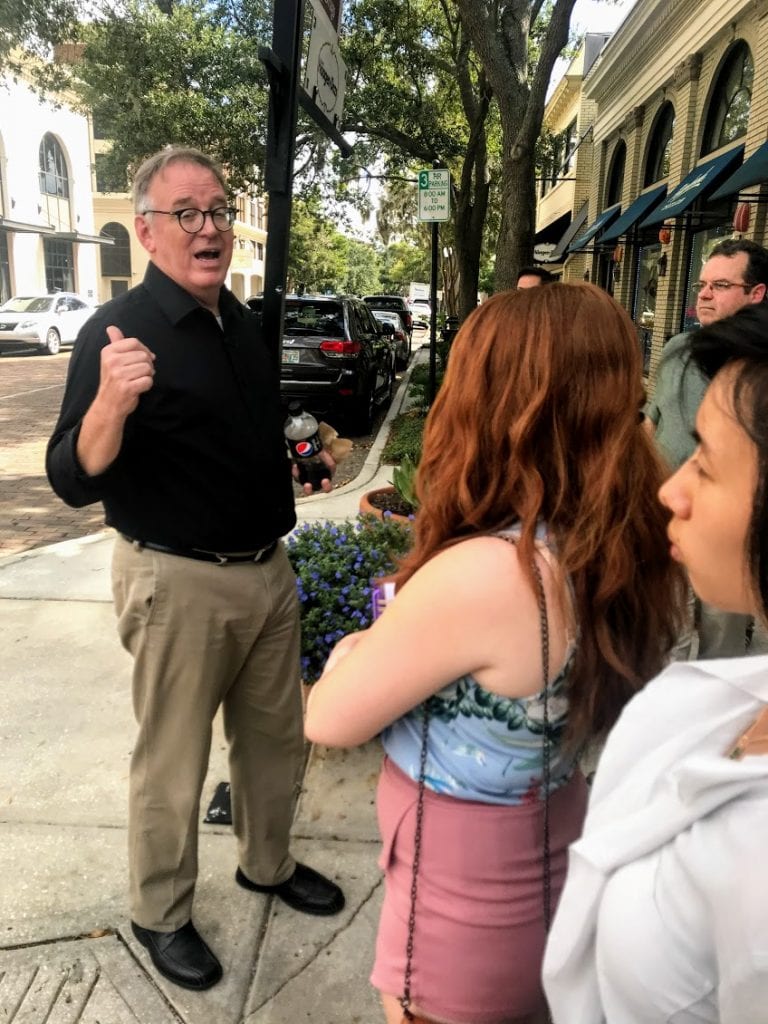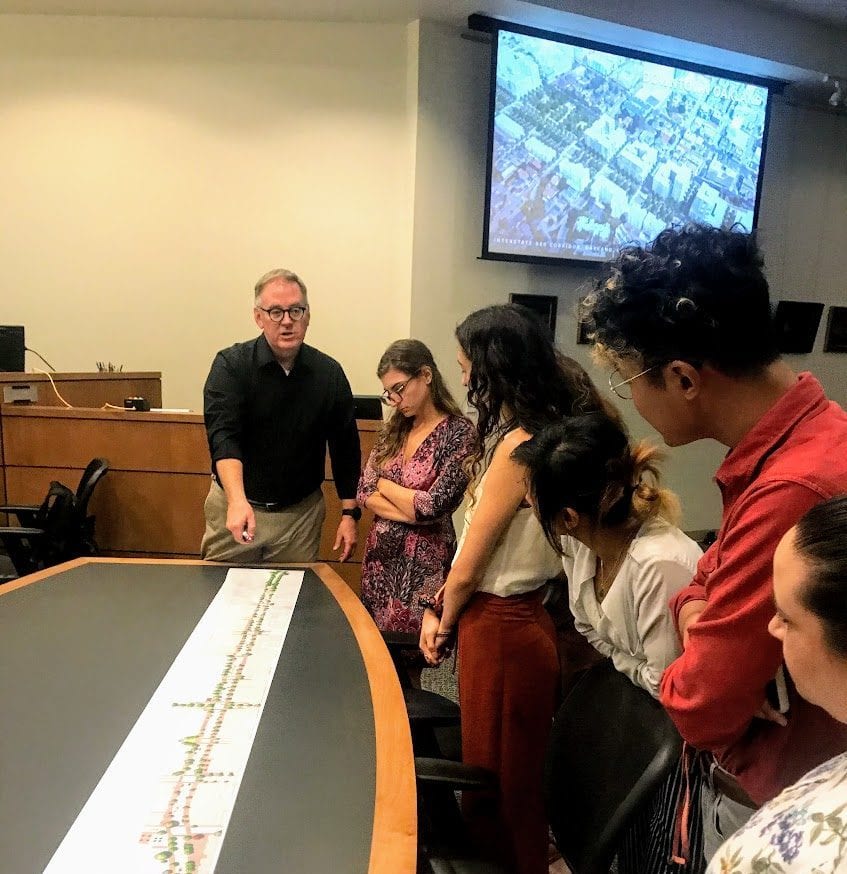The University of Florida College of Design, Construction and Planning’s undergraduate landscape architecture Implementation studio hit the streets recently to visit sites and offices throughout central Florida.
In Winter Park, they met Victor Dover, Principal-In-Charge at Dover Kohl Town Planners. Dover, (also co-author of the Dover-Massengale book “Street Design: The Secret to Great Cities and Towns”) presented his firm’s 1997 redesign and overhaul of Park Avenue, Winter Park’s highly-successful retail and commercial main street.
Following a presentation attended by Winter Park City Staff at city hall, Dover led the group on a detailed walking tour of Park Avenue, which is one of many street design case studies featured in the Dover-Massengale book.
“We were thrilled to have Victor give so generously of his time by travelling across the state to share experiences and insights with us” said Kevin Thompson, UF DCP Associate Professor of Landscape Architecture.
Dover’s presentation covered a range of topics from approaches to winning public support for downtown revitalization projects to strategies for financing major public works projects and from navigating challenging political landscapes to working collaboratively across the design and planning fields to create great urban spaces.
On the walking tour, Dover drew attention to views that unfold as one moves along a realigned section of the Park Avenue streetscape and revealed many of the innovations used to transform Park Avenue as the high performing streetscape environment it is today.
In the afternoon, the group visited Hanibel Square and a number of recently-completed urban design projects in the vicinity including the “road diet” streetscape project of Denning Avenue and a new mixed use project in Maitland before making presentations to partners and UF DCP alum on staff at Dix Hite + Partners in Longwood.
Following the presentations, the students conducted their initial site visit for this semester’s final project that involves plans to establish a comprehensive urban canopy in historic Oviedo Old Town.
The field trip follows directly on the heels of an afternoon urban forestry seminar the studio hosted with guest speakers including UF Professor Emeritus Ed Gilman and Norm Easey, CEO of the Florida Chapter of the International Society of Arboriculture. The seminar focused on the challenges of implementing a successful urban forestry program covering a range of topics from species selection, subterranean conditions, rootzone environments, urban forestry management and ecosystem service benefits and rewards.
Why so much focus on trees? Because trees matter.
“Trees have always mattered,” says Thompson who is leading this semester’s tree-centric implementation studio. “But with reports such as we saw published out of Switzerland in Science this summer suggesting that planting trees is the single greatest thing humans can do to combat the effects of climate change, it’s more important now than ever before that we advocate for healthy, robust urban forests.”
Even if we’re not advocating for climate change solutions, planting trees is good for many other reasons, not the least of which are all the ways in which they contribute to creating beautiful, healthy urban environments. As the town planner and past President of the Congress for the New Urbanism Victor Dover puts it:
“What I’ve concluded after many years of doing this is that there is one little detail that matters a whole lot, and it’s the street tree.”


